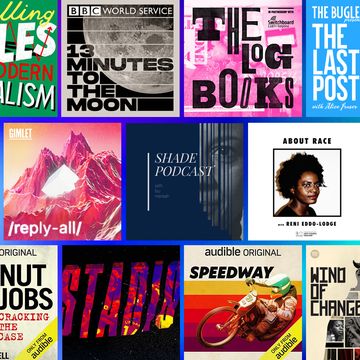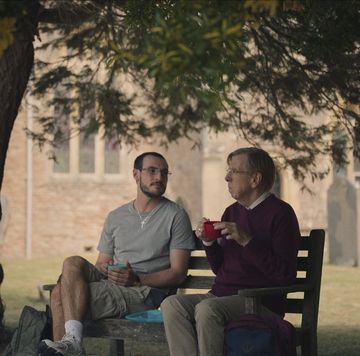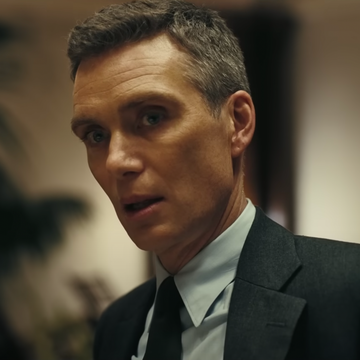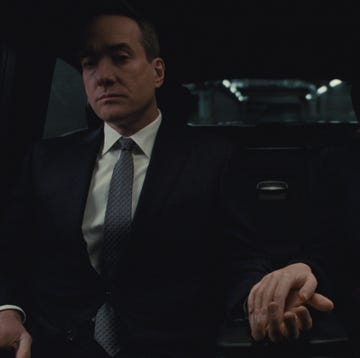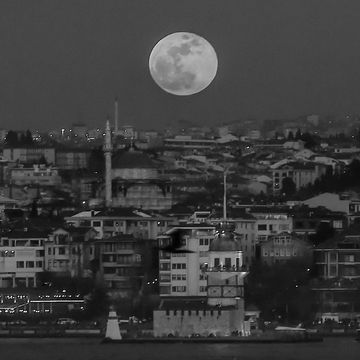On December 20, 2017, I set out to write an essay about the metaphysical mysteries of The Muppet Christmas Carol. It was the film's 25th anniversary and the perfect time to reflect on this complex children's adaptation of the Charles Dickens classic. My central question about the film was this: Why is Scrooge unable to see Gonzo and Rizzo until the closing moments of the movie?
Gonzo, as Charles Dickens, and his sidekick Rizzo both narrate the story in a clever (and fun!) framing device, but the way they interact with Michael Caine's Scrooge is inconsistent and confusing. The two Muppets at once tell the story to the audience—breaking the fourth wall—and at certain points interact with the characters within the story they are telling. Throughout the entire movie, Scrooge walks past them obliviously, as if they’re not there. And when he’s visited by the first ghost, Gonzo and Rizzo literally latch some sort of grappling hook to the ghost's robes and follow him into Christmas Past. When Gonzo and Rizzo are alone with Scrooge in a room, he doesn't acknowledge their presence nor does he seem able to see their hilarious antics. Meanwhile, the other Muppets—including the penguins who watch Gonzo and Rizzo ice skate, the horse who draws their carriage, and the schoolmaster Sam Eagle (into whose ear they whisper)—are all able to see the narrators.
At first I thought they might be a different type of spirit than the three ghosts who visit Scrooge. Characters in the past can see the narrators, and only animal Muppets can see Gonzo and Rizzo in the present narrative. Are they some sort of phantasmagorical beings that transcend space and time and can only appear to certain individuals and animals? (You know how dogs can sense ghosts? Like that.)
But this doesn’t make sense, either. If they are the non-observable omniscient narrators, then why does Scrooge wish them a Merry Christmas at the end of the movie?
Here's the un-published (until now) conclusion I came to back in 2017:
The ability to see Rizzo and Gonzo is adherent to the division of class in The Muppet Christmas Carol. In Charles Dickens’s novella, the omniscient narrator provides information, and even the thoughts, of everyone in London—often giving an opinion of Scrooge himself. Looking at Scrooge through this lens shows the opinion of the lower class and how they view the greedy, wealthy man. The London commoners in The Muppet Christmas Carol are the Muppets, who often represent the lower class from the elite humans—Scrooge, his nephew, and Belle, his nephew’s fiance. It’s this populist nature of the narrator Gonzo and his sidekick Rizzo that makes them able to be seen by the Muppets of The Muppet Christmas Carol but not the humans. Gonzo and Rizzo are one of them, both in terms of class and species (i.e. Muppet).
Dickens wrote the book not simply about the values of Christmas, but to analyse how 1840s London policy ignored and took advantage of people in poverty. Here, Scrooge and the other upper class humans literally cannot see any of the Muppets that they're not forced to interact with. So, after being visited by the Ghost of Christmas past, Scrooge’s eyes have been literally opened to the populist ideals of the commoners and can see Gonzo and Rizzo at an hour and 14 minutes into the movie when he wishes them a Merry Christmas. What's interesting is in this moment, Bean can now also see Rizzo and Gonzo who also suddenly leave footprints in the snow. This is a moment that director Brian Henson recently revealed as, "The story catching up in real time."
Now, I never actually actually published this essay because not all of this adds up. Not all of the Muppets are actually among a lower social class. As we see in the film, there are a number of wealthy muppets within this universe.
So, here we are, one year later, on the 26th anniversary of this film, and I still haven't stopped thinking about this abandoned essay. I went back and re-watched the movie, and revisited the interview with Brian Henson, and I think I've finally decided that the easiest answer is probably the most logical one.
Dickens's A Christmas Carol was influenced by what he witnessed firsthand of the treatment of impoverished people in the mid-19th century, along with a government report he read on child labor in 1843. So, consider A Christmas Carol at once a culmination of what he saw, what he heard, and how he analysed the social problems of the time. This story began as a pamphlet to call out the cruelty of the times. Of course, instead it became this novella and an instant bestseller that drew attention to the slew of challenges of London's classism.
Gonzo and Rizzo throughout the film are our narrators speaking to us from present day. The story that we're seeing played out with the ghosts of Christmas is the visual representation of what Dickens is imagining on the page—it's an analysis of fact and fiction and first and secondhand sources. Scrooge doesn't see Gonzo and Rizzo because they weren't there. And in the end, when the story is "catching up in real time," that is what happens after the publication of A Christmas Carol, when mid-19th century Londoners were introduced to the atrocities of the time.
At this point you probably think I'm stoned out of my mind, but even if it doesn't really matter if Scrooge can see Gonzo and Rizzo, the themes behind this story and narrative structure are just as important today as they were in the 1840s, or even 26 years ago when this movie was released. It's never a bad time to look back to see how the wealthy class abuses at risk communities, and it's never a bad time to learn those lessons from the Muppets. Plus, given the trajectory of our current times, it's more than likely that at this point, Gonzo and Rizzo will be the populist Democratic candidates in the 2020 US presidential election. But let's save that for next year's abandoned holiday essay.
Matt Miller is a Brooklyn-based culture/lifestyle writer and music critic whose work has appeared in Esquire, Forbes, The Denver Post, and documentaries.


